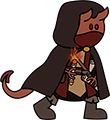I think part of the issue is that random encounters existed for a different type of module than today's adventure paths. If the point is to explore an area than these random encounters are the primary things stopping you from getting to the reward, and I believe tended to be both quite varied and avoidable ('the bandits are at longbow range and may not have spotted you, what do you do?').
Then you get to the dungeon and random encounters exist to discourage resting and novaing.
The modern D&D adventure path really needs to be closer to '3 combat encounters per long rest, we tell you when the PCs have the opportunity to rest'.
Games where combat is either a punishment or just another type of activity are becoming more common, and it's pretty great. I honestly think there's a lot to be said for 'you can get by these guards with a successful Fight roll, but if you're unlucky you'll come out battered, do you want to consider another approach'.In other systems like Gumshoe, which I've played in Night's Black Agents and am preparing to run in Delta Green, maybe one? Or zero? Ideally zero? Combat mechanics aren't the strong point of Gumshoe. I think they're more fun as a thing that happens rarely when the company has no other choice rather than as a core piece of the group's problemsolving.
My working theory is that most adults who play TTRPGs aren't there to interact with them as a game as much as a social/storytelling experience, which combined with a tendency for at least one player to know The RulesTM means they offload system knowledge onto those who already have it.
This is, honestly, generally fine if it's at the level of 'I don't want to deal with point buy character creation, but I can remember which dice to roll for what', it's the people asking 'what die do I roll again' every single roll that get on my nerves.
View Single Post
-
2024-04-04, 01:55 PM (ISO 8601)Titan in the Playground


- Join Date
- Oct 2009
- Location
- In my library
 Re: How many combats per session do you find most enjoyable?
Re: How many combats per session do you find most enjoyable?


 ) by Honest Tiefling.
) by Honest Tiefling.
 Reply With Quote
Reply With Quote